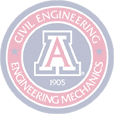
|
|
|
|
|
|
|
|
|
|
|
|
Modular Node |
||
|
|
CONCEPT |
||
|
|
|
INTRODUCTION Modular nodes are being developed for use in seismic-resistant steel moment frames. The impetus for developing the modular nodes is the recently discovered susceptibility to fracture of welded-bolted beam-to-column connections in steel special moment-resisting frames (SMFs) during earthquakes. These structures rely on the strength, stiffness and ductility of welded moment connections at the beam-to-column joints to create an efficient lateral-load resisting system (Popov et al, 1989). However, more than 100 SMFs suffered fracture at these welded joints during the Northridge (FEMA-355E, 2000) and Kobe earthquakes (Watanabe et al, 1998). The poor performance of the welded moment connections has raised questions regarding the reliable ductility of the SMFs. It is realized from the research about fully restrained steel moment connections designed following a codified design procedure that a new and effective earthquake-resistant connection design should be based on a combination of weld fracture mitigation measures and changes of connection configuration aimed at reducing the stress levels or redirecting the stress flow in the connection (Stojadinovic and Goel 2000). This paper describes the development of innovative solutions for connecting members in SMFs through a combination of aspects of modular construction and alternative manufacturing processes to provide more reliable and consistent performance of the connections than occurred in the Northridge Earthquake. The overall objective of this paper is to develop two kinds of new moment resistant connections in two ways: (1) Combine panel zone energy dissipation and modular node concept; (2) Combine beam plastic hinge energy dissipation and modular node concept. a. Modular Node Concept..
The underlying concept in the development of the modular node is the consideration of seismic performance requirements as a first step, prior to establishing the configuration of the connection. The node is then configured directly to meet these requirements. This approach represents a significant departure from current fabrication methods and a major benefit is the ability to remove the field weld from the critical cross-section. The versatility in design required for this approach is not available under current procedures. Thus, the modular nodes will be created from high-strength high-value steel using a casting process, providing isotropy in material behavior not currently present. While the casting approach renders the modular node viable from a manufacturing standpoint, constructability issues must be addressed. b. Modular Node Prototype Two modular node prototypes have been developed: (1) a panel zone (PZ) dissipator; and, (2) a plastic hinge (PH) dissipator. In each case, the modular node is a cast piece that is shop welded to column pieces. Two-tier construction is envisioned in which column assemblages with nodes are erected with beams subsequently field-welded to the modular nodes.
PZ Dissipator: The design intent of the PZ dissipator (See Figure 1) is to provide the majority of seismic energy dissipation through stable yielding of the panel zone. Accordingly, the PZ dissipator employs a weak panel zone relative to the beam, column, and connection region. To accomplish this design, distortion at the beam flange-column flange interfaces and weld location must be mitigated. The following features are included in PZ dissipator design to achieve the objectives: (1) Weak panel zone: dissipates a majority of the seismic energy; (2) Filleted cruciform: helps to reduce the local kinking at beam flange-column flange interface; (3) No web in beam link: it can effectively lower the beam shear by preventing shear reversal between beam flange and beam web and also it gets rid of the problematic region in bolted-web welded-flange connections; (4) Reduced beam link section: yielding outside the panel zone is controlled to occur at this non-critical regions to minimize demands at critical regions for example the weld location; (5) Flange stiffener: helps to stabilize the beam link flange by reducing secondary bending and kinking at the region close to weld location. . PH Dissipator: The PH dissipator has the following important features: (1) a reduced beam section (RBS) to form a controlled beam plastic hinge region within the node to dissipate a majority of the seismic energy; (2) an isolated web to reduce flange shear; (3) a filleted cruciform to reduce the column flange kinking; (4) a “balanced” panel zone with respect to the node beam. While the PZ modular node and the PH modular node dissipate energy in quite distinct ways, each of these modular node prototype configurations share two features at the beam flange-column flange interface: (1) Elimination of the field weld; (2) Filleted Cruciform.
(1) Elimination of the Field Weld: The most obvious improvement is the removal of the field weld from the beam-column interface. In the pre/post-Northridge bolted-web welded-flange connections, the field weld requires a weld access hole in the beam flange which creates plastic strain concentrations in the beam. In addition, it is hard to control the quality of weld. Then the flaw of the weld may act as the initiation of crack (FEMA 350). The modular node will greatly reduce the risk of brittle fracture by removing the weld from critical region. A field weld does exist farther from the column face. The stresses at this cross-section are evaluated and minimized.
(2) Filleted Cruciform: Filleted cruciforms occupy the beam flange-column flange interface region in both the PZ and PH modular nodes. The principal reason for these cruciforms in the panel zone is that they can effectively reduce distortion (“kinking”) of the column flange-beam flange intersection during large panel zone plastic shearing. Then the reduction in kinking make it possible for large plastic strain to develop in the panel zone and thus creating a more efficient energy dissipation mechanism than primarily utilizing the beam plastic hinge without high potential in column-beam interface brittle fracture.
In the PH dissipators, the major benefit of the filleted cruciform is the reduction in triaxial tensile stress levels at the column flange-beam flange junction. Additionally, the gradual transition from the beam section to the column section lowers stress concentration due to restraint imposed by the column flange on the beam flange in the transition zone. The filleted cruciform may also brace the RBS for flange lateral buckling.
|



